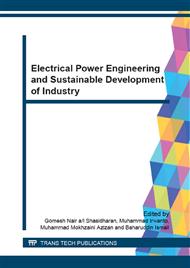p.363
p.368
p.373
p.378
p.383
p.388
p.393
p.398
p.403
Seasonal Wind Power Potential for a Resort Island in the South China Sea
Abstract:
This paper presents a wind energy assessment for a resort island in the South China Sea that has a seasonal climate contributed by the monsoon seasons. The resort island selected for this study is Tioman, as it denotes the typical energy requirements of most resort islands in the South China Sea. The island depends primarily on diesel-fuel for electricity generation. However, diesel is subjected to expensive and unpredictable market values, high operation and maintenance costs, and poses environmental threats. Therefore, the potential for wind energy conversion system development is conducted in order to reduce the island’s diesel fuel dependency. The study starts with energy auditing and meteorological data collection. Subsequently, the wind energy potential is evaluated using Weibull distribution function. The results indicate that the wind speed vary according to seasons, where higher wind power can be generated during the northeast monsoon season than any other seasons.
Info:
Periodical:
Pages:
383-387
Citation:
Online since:
September 2015
Keywords:
Price:
Сopyright:
© 2015 Trans Tech Publications Ltd. All Rights Reserved
Share:
Citation:


